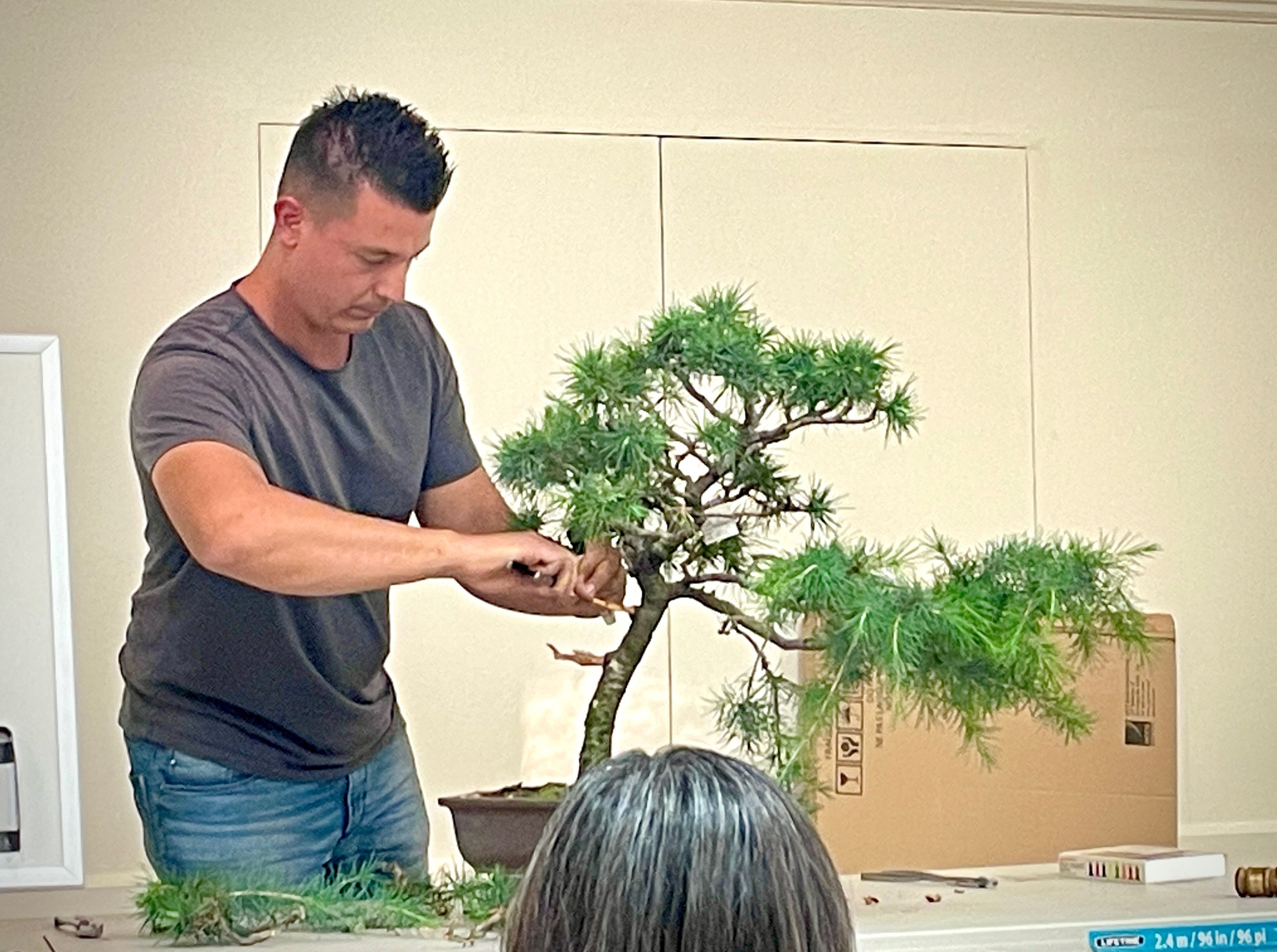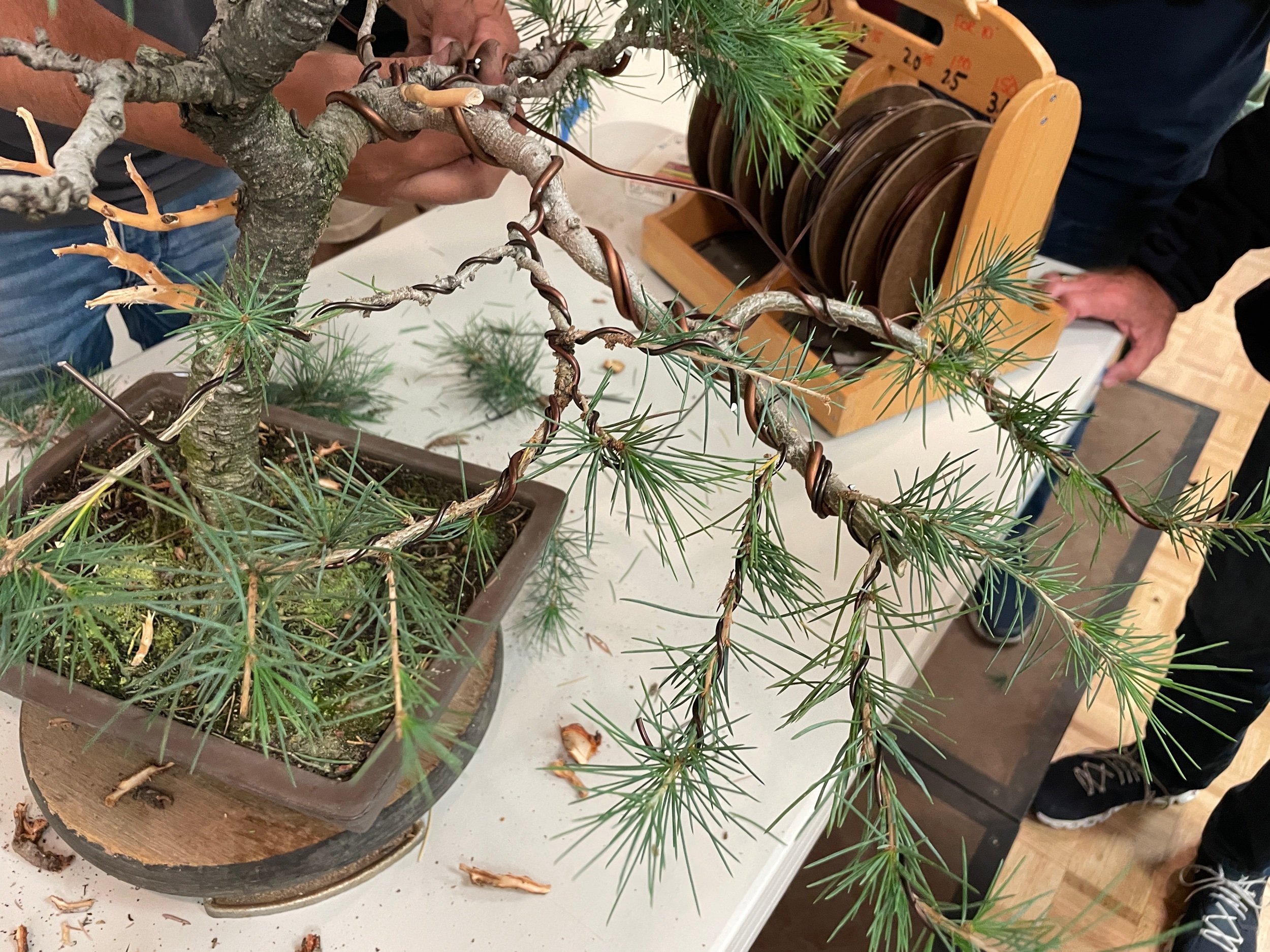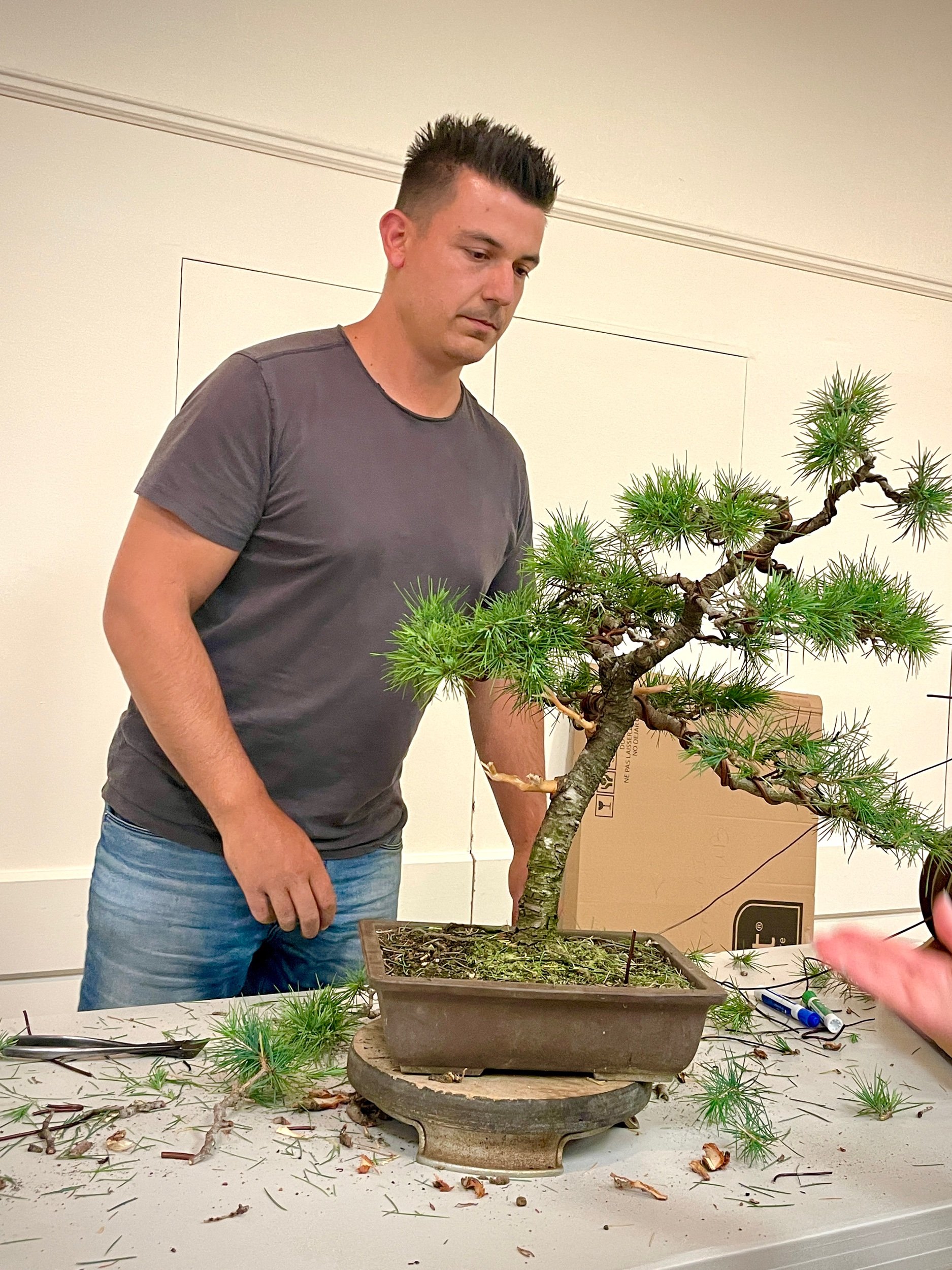Yannick Kiggan, SBBK 2023
History on bonsai styles
Bunjin scroll
Linear formal
Neoclassical top ⅓ hiding trunk
Tashiogari (⅓ H from base to first primary branch
Masahiko Kimura— contemporary bonsai school (break rules)
Key Features of a Bonsai
Nebari
Not as important for literati, cascade, conifers
Movement
Branch placement
Taper
Balance
Long branches can be brought back in (around the axis of the tree)
Ideal bends and branches—2nd section is ½ length of last lower section, etc
Can be the mass of the pot to counter a leaning trunk
Ryan Neil— balances massive deadwood and living
Deadwood
Bark
Branch movement
Traditional informal upright, branch movement and taper of trunk applies as well
Alternating—to avoid swelling or bar-branching
Minimum of 3 branches
1st Primary
Counter balance
Back branch (depth)
Apex
Front branch
Style bottom to top
Move downward for age
Then remove bottom branches
Style
primary has 3 pads and larger—more open space
counter balance fewer pads, smaller pads, less space
Deadwood
Branch breaks downward, irregular
Larger break on top and finer breaks under
One technique is to leave some bark on when drying to help preserve wood
Prefers to create a deadwood triangle
Remove a little bark from under the branch as though it tore off
Can create movement by heat or wet towels
Wiring (⅓ branch Dia Al)(¼ branch Dia Cu)
Bending down, start rotating ontop for tension and rotate towards the direction of the bend
Maximum of 2 wires on a branch
Start wiring over the shoulder and not from the crotch
Material
Soil
Italian alt to Akadama is Bardula (decomposes 5yrs later)
Pumice—drainage, porous
Lava—sharp and prevents fine roots, but has iron and gets greener foilage
Can put rusty nails on top of soil to add iron



